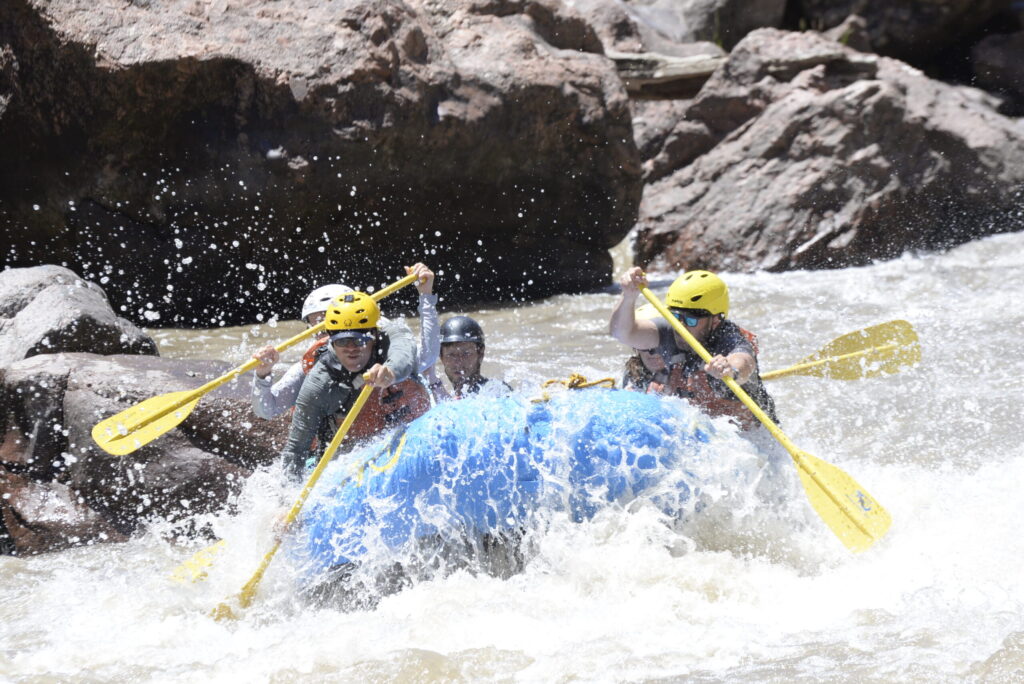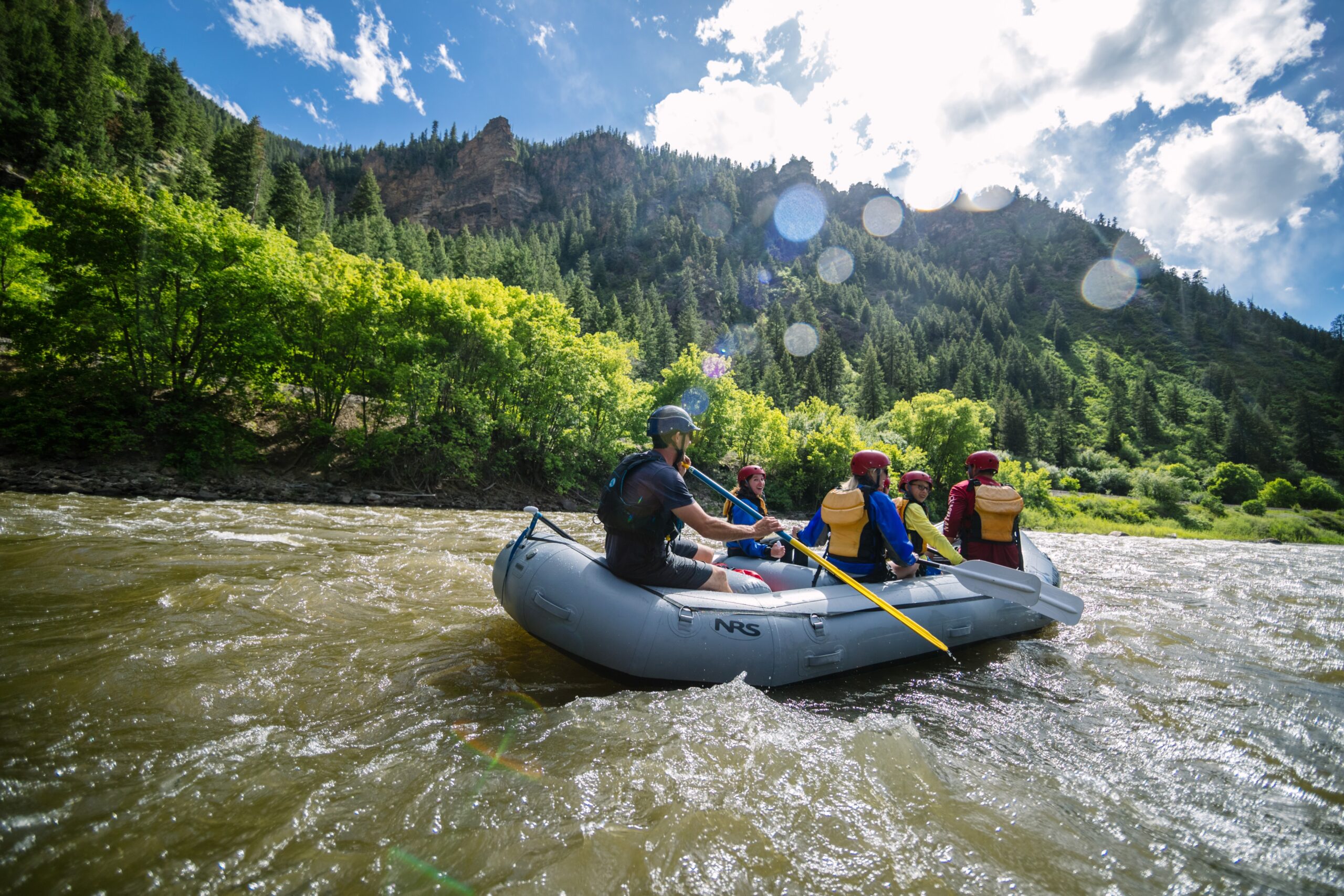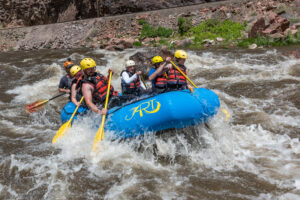1. The Roaring Fork River: Rafting Nearest to Aspen
From its headwaters deep in the Front Range to its confluence with the Colorado River at Glenwood Springs, the Roaring Fork River contains everything from no-joke class V to class II giggle water. Generally speaking, the river mellows the farther north you go. While there are tougher sections of the river, we’ll focus on a can’t-miss intermediate run.
Woody Creek & Toothache
These two sections combine for 10 miles of all-around fun. Put in at the Upper Woody Creek Bridge Access, also Jaffee Park, and float four miles to the Lower Woody Creek Bridge. Take out here or continue for six more miles and get out on Hwy. 82.
Rapids will vary depending on flows but expect relatively continuous class II-III with some intermediate technical moves that can become class IV at high water. Boulder dodging and quick maneuvers are the name of the game here. The Roaring Fork is runnable for most of the spring and summer seasons, but when planning your trip, look for flows between 200 and 1400cfs.
2. The Arkansas River
The Arkansas River starts up near Leadville where Tennessee Creek and the East Fork of Arkansas come together. It then flows 1,460 miles across four states before joining the Mississippi. Just south of Buena Vista, lies one of the most popular river stretches in the country. The Arkansas River is a great option for both whitewater rafting Colorado Springs and Aspen.
Browns Canyon River Rafting
Located within federally protected confines, Browns Canyon National Monument is truly a sight to behold. Its impressive high-canyon walls and untrammeled landscape are well-deserving of the presidential delegation. But let’s get to the rafting, which is second to none. For a full day, put in at the Fisherman’s Bridge Access and float 13.5 miles down to the Stone Bridge Access.
Here you will find exciting whitewater, with numerous class IIIs and some rapids approaching class IV. However, this section is renowned for its pool-drop character, making it a relatively safe river, and fun for the whole family! No doubt, Rafting Browns Canyon has some turbulence, but at the end of the day, it’s a friendly stretch of river. This section is runnable at a wide variety of flow levels. Look to run it anywhere between 300 and 5,000cfs.
3. The Upper Colorado
Well-known for the fabled Grand Canyon, the Colorado River is steeped in boating lore. However, lesser-known are the serpentine stretches and intermediate whitewater farther upstream. Check out this scenic stretch for an introduction to whitewater.
Glenwood Canyon Whitewater Rafting
Just upstream from Glenwood Springs lies the stunning Glenwood Canyon. When whitewater rafting Glenwood Springs, the Shoshone stretch has numerous class III rapids offering a great next step for up-and-coming boaters, as well as awesome play for the more experienced. Put in at the boat ramp directly downstream of the Shoshone Hydroelectric Facility and enter the rapids immediately.
Though this stretch doesn’t give you much time to warm up, the rapids are not crazy complex, though there are many—so get ready for a fun ride! Here, you’ll have consistent class II and III rapids the whole way to the takeout at Grizzly Creek. It’s a short run (less than two miles) so multiple laps are common. This float is doable most any time of the year, so plan when the weather is nice. Levels of 1,000-7,000cfs are ideal.



















